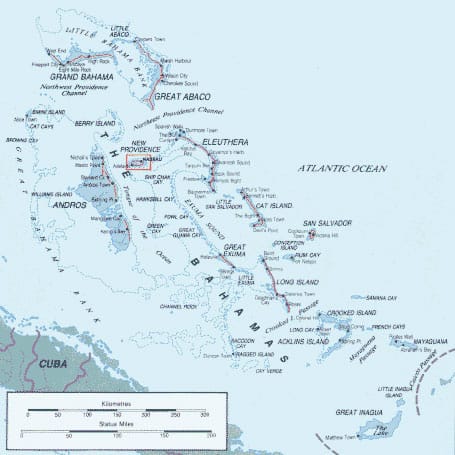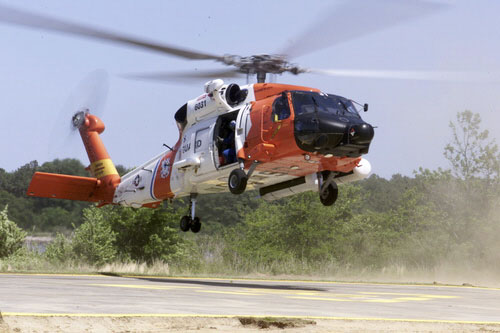 The Bahamas, a sparsely settled group of islands extending from a point seventy miles off the east coast of Florida to just northwest of Haiti, gained independence from the United Kingdom in 1973.
The Bahamas, a sparsely settled group of islands extending from a point seventy miles off the east coast of Florida to just northwest of Haiti, gained independence from the United Kingdom in 1973.
Carlos Lehder, one of the kingpins of the Medellin Drug Cartel, arrived there in 1978 and started buying up property at Norman Cay. By 1980 he controlled the entire Island. The Bahamas became a trans-shipment point for both Marijuana and Cocaine. Cocaine was not yet on the DEA radar screen and the Carter Administration saw no health hazard associated with it. Lehder’s plan was to revolutionize the cocaine trade. Previously drug dealers relied on human “mules” to smuggle the drugs on regular commercial flights. Utilizing Norman Cay for a trans-shipment point much greater quantities could be transported with far less risk of interception. Lehder built a 3,300 foot runway protected by radar and armed guards. Flights were made to Colombia to pick up cocaine on a regular basis. The cocaine would then be transferred to small personal-type aircraft that would transport it to drop points in the States. These aircraft would blend in with the high density low altitude weekend traffic between the Bahamas and the Florida coast. The Bahamian government did nothing to curtail this and other operations.
In 1982 the Bahamian government, in response to pressure from the United States, began to crack down on this and other drug activities. The Norman Cay operation was shut down but the use of the Bahamas as a trans-shipment point for marijuana and cocaine continued unabated. The police forces of the Bahamas and the British-administered Turks and Caicos islands were ill-equipped to locate and stop the smugglers’ aircraft and small boats. An Agreement was entered into by the British, Bahamian and United States governments to cooperate and enhance the ability of the Bahamian government to interdict, prosecute and convict drug traffickers. In April, with little fanfare, OPBAT became operational. It was initiated by a contingent of the South Florida Task Force (SFTF), with the Drug Enforcement Agency (DEA) as the primary agency. The DEA provided two helicopters that transported Bahamian police detachments to the islands identified as air and boat trans-shipment sites. The agreement also gave U.S. interdiction forces the right to fly in the islands’ air space and patrol their contiguous waters.
In 1983 two U.S. Air Force UH-1Ns replaced the DEA helicopters. In 1987 U.S. Coast Guard personnel assumed the responsibility for the OPBAT operations center in Nassau and Coast Guard HH-3Fs, deployed from Air Station Clearwater, took over operations out of Nassau and Freeport. Army helicopters operated out of Georgetown. In 1991 the Great Inagua OPBAT site opened and it also was manned by Coast Guard HH-3Fs. During the period 1993-94 the HH-3F helicopters were replaced by the HH-60J.
The Department of Defense (DOD), through the Joint Interagency task Force-East (JIATFE) and the Custom Service (USCS) through the Air and Marine Interdiction Coordination Center, provided detection and monitoring of suspected air and surface smuggling targets as they depart South America and other Caribbean locations, enroute to the Bahamas. Airborne targets, generally twin engine turbo-prop aircraft, air dropped cocaine to boats waiting in the Bahamian waters or landed at remote island airstrips where the contraband was loaded on waiting vehicles. Small high speed boats, called “go-fasts”, 28 to 40 feet long fitted with three or four 250 horsepower engines, passed through the Windward Passage between Haiti and Cuba hugging the Cuban coast. About halfway up Cuba’s northern coast the smugglers turned their boats north and raced into Bahamian territory, hoping to make landfall unobserved.
OPBAT utilizes its helicopters to effect apprehensions and seizures once the contraband has reached Bahamian territory. This is more difficult than what it would seem to be. The Bahamas consist of over 700 islands that cover a geographic area roughly the size of the state of California. Anticipating the drop site and adequately covering the area with widely dispersed helicopter bases is a difficult task. The effective use of intelligence is therefore critical to successful operations. OPBAT has a Tactical Analysis Team (TAT), manned by DOD intelligence specialists and USCS Intelligence Analysts.

The Government of the Commonwealth of the Bahamas and Government of the Turks and Caicos Islands provided police officers who flew all OPBAT missions and were responsible for making arrests and seizures. A DEA Special Agent was also on board every flight to provide advice, coordination and the collection of intelligence to be immediately disseminated to all participants. Over all management was vested in the DEA Nassau Country Office. Coast Guard helicopters made daily daylight checks throughout the islands. They were amphibious and could land just about anywhere. Night runs were flown several times a week. The HH-3E with its FLIR (infrared radar) was especially suited for this. They could identify and track smugglers before the drop, at the drop, and after the drop. They could track and direct people on the ground. The Bahamian police officers would wear transponders and thus the people in the helicopter could tell the “bad guys” from the “good guys” and direct the ground agents as they apprehended the smugglers. The Bahamas proximity to the United States and the sheer extent of its area guarantee it will be a target for drug trans-shipment and other criminal activity for the foreseeable
The Bahamas proximity to the United States and the sheer extent of its area guarantee it will be a target for drug trans-shipment and other criminal activity for the foreseeable future. The Bahamas is expected to continue its strong commitment to the bilateral counter narcotics efforts but because of its relatively small budgetary resources it will continue to depend upon significant U.S. assistance. OPBAT is an example of cooperation and coordination between entities. It has responded to the changing patterns and techniques of the drug traffickers employing innovative and advanced technologies. It has been a successful operation and with continued flexibility will remain so.

